Let´s explore new virtual clinical cases on acute medicine. There you can find all virtual cases created during this school year 2017/2018.
Anaesthetic Management of Patient with Diabetes Mellitus
Jitka Chlupová MD, Vojtěch Nekvapil, Ielyzaveta Panchenko
There is an increasing prevalence of diabetic patients undergoing surgery with the high number of complications associated with comorbidities. And even shorter surgical procedures without prior adequate diabetes compensation can pose a significant risk to them.
This algorithm aims to emphasize the importance of preoperative preparation of the patient with DM, choice of anaesthesia and perioperative monitoring.
Anaesthetic Management in THA
Monika Zamborská, MD, Kamil Vrbica, MD , Čuloková Zuzana, Kosztúr Daniel
Total hip arthroplasty is one of the most frequent operations in hospitals of all types, which is performed predominantly in elderly people and has its own specifics. The algorithm focuses on the choice and method of anaesthesia. It points to a potentially fatal complication of the operation using cement implantation, the cement syndrome (BCIS) and offers a solution to this complication. Next it deals with the problem of perioperative blood loss, which needs to be quantified and subsequently rationally covered. The last part suggests the methods of post-operative pain treatment.
Jehova Witnesses in a car accident
Martina Klincová, MD, Lucie Moťková MD, Anna Juhásová, Juliána Šimová
Traffic accidents often lead to wide spectre of different injuries that can greatly endanger the life of a crew. Even at first glance minor injuries can cause extensive internal bleeding with large blood loss. In such cases, inevitable immediate intervention is necessary, mostly with a blood transfusion products/blood derivatives. But what if a patient belongs to a group of so-called blood transfusion rejectors? Do you know when you can replace your patient's blood loss with these products and when will you try to find another way of replacing? Our algorithm offers you the opportunity to solve the model of a traffic accident involving Jehovah's Witnesses who are known to belong to a group of people rejecting blood transfusions. There are nearly 16,000 Jehovas Whittnesses in the Czech Republic, so the chance occuring this kind of situation is not negligible. The laws mentioned in the algorithm are valid for the Czech Republic, therefore situation in the English-speaking countries may differ.
End-of-Life Decisioning from Nurse Point of View
Mgr. Michaela Březovská, Hana Harazim, MD
Palliative care in nursing reflects the view of a dying patient as a entire whole person. The provision of palliative care depends primarily on the non-medical health care staff, which provides, for the majority of the time, the dying patients comprehensive care during hospitalisation in an acute bed. Primarily the nurse is a direct participant in all of the events and comes in to contact with dying and death more often than any other medical staff. Therefore, it is essential that non-medical healthcare professionals have considerable interpersonal skills but, above all, clinical knowledge in relation to observation, response and initiation of symptom therapy. The aim of nursing in palliative care is to provide integrated comprehensive care that prevents and alleviates all aspects that are associated with any form of suffering of the dying patient. The aim is therefore to provide care that guarantees the highest quality of life until the last days of a dying patient in the department of acute and intensive care.
SIADH and hyponatremia
Jan Hudec MD, Miriam Hricová, Kristýna Chudjáková
The syndrome of inapropriate secrection of the ADH – antidiuretic hormone develops after injuries, operations or brain infections. Secretions of the ADH in organism results in water retention and also decreasing of plasma sodium level. However there are also other causes of hyponatremia, which differ significantly in their clinical solution. That is why it’s so important for the doctor to find the cause of hyponatremia as soon as possible and suggest correct therapy. This algorithm guides you in differential diagnosis of hyponatremia and folowing possibilities of the therapy.

Peripartal Life-threat...

Acute coronary syndrom...

Brain death and organ...

Anaesthesia management...
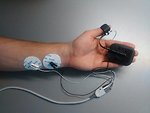
Neuromuscular blockade...

Water Rescue service III
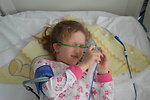
Severe respiratory inf...
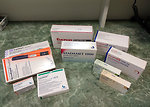
Anaesthetic management...

End-of-Life Decisionin...

Anaesthetic management...
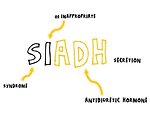
SIADH and hyponatremia

Jehova Witnesses in a...

Mushroom Poisoning

Target Controlled Infu...

Pulmonary embolism II
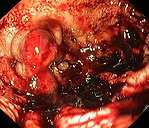
Life-threatening bleeding





